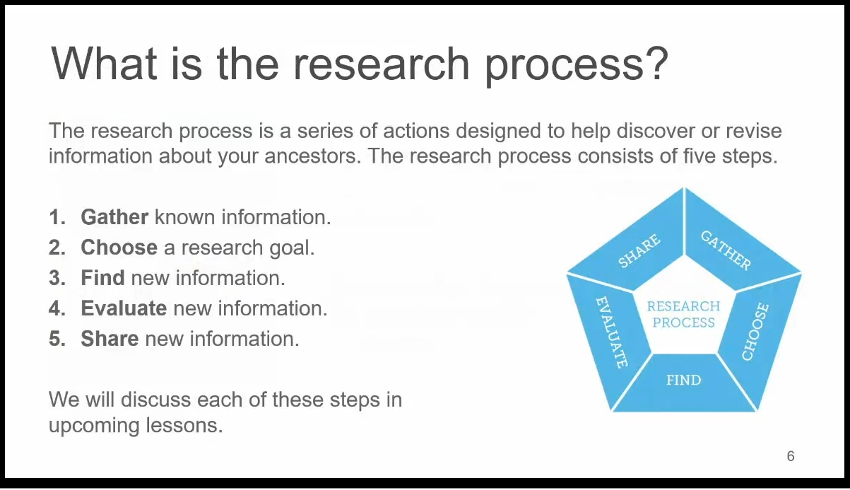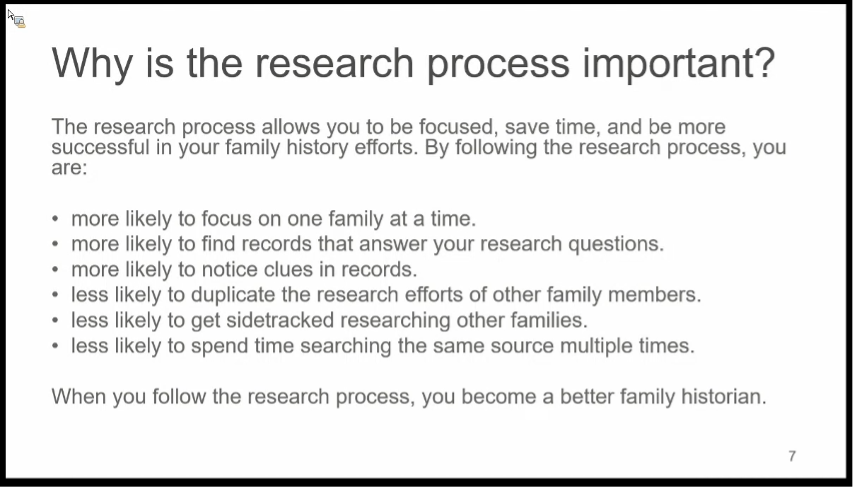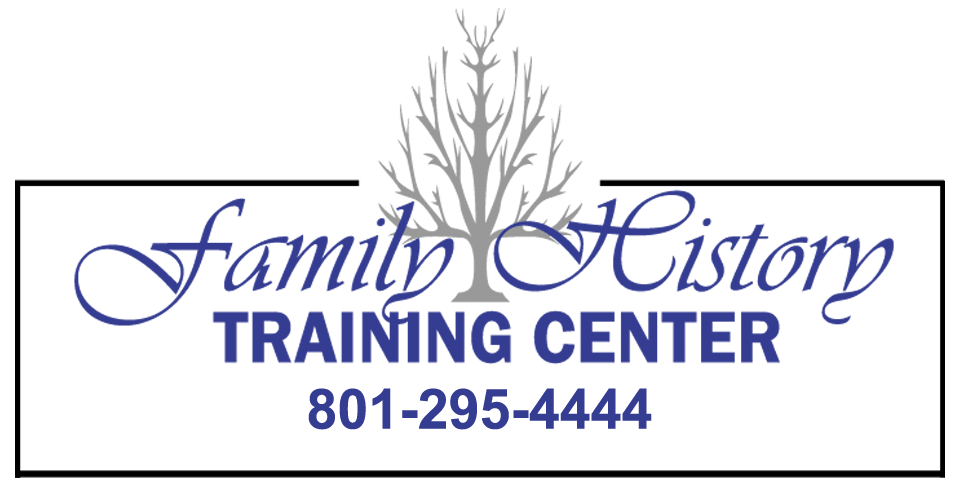What most people who are new to Family History do:
Probably the most used website by members of the Church of Jesus Christ of Latter-day Saints for family history is the FamilySearch website. Most new users go onto that website and setup a free account and browse the Family Tree looking at their own “Person” site trying to see if they can see themselves, their family, parents, grandparents, etc.
For members of the Church of Jesus Christ of Latter-day Saints, their information on the “Tree” view will appear automatically from their church membership record. Anyone not a member will need to enter their personal information for themselves and possibly their immediate family members to get started.
Often the individual will need go onto the FamilySearch website using their log-in and add their parent’s and grandparent’s information until they are back to a deceased ancestor. When that is done, then FamilySearch (if the information has been entered by someone) will show their direct ancestors back to a point in the family line where the information has not been entered into FamilySearch. That is what is called an “end of line” that needs to be researched and added to FamilySearch.
At that point, most new users do not know quite how to proceed. The temptation is to go to the “End of Line” of some ancestor and start from there to research names and information to be added to extend the line. Often, the person doing the research and other work, doesn’t know where to start and what to do.
Waa Laa – This is where we come in to assist and train you in how to proceed.
If a person does the research work on their own without some training or supervision, they often get lost and forget what to do next. Often they go back and research the same items several times over because they forget where they were. They don’t have an organized plan or an organized process to further the work. This is where a lot of people get frustrated and just give up and quit.
FamilySearch Learning Series:
The website called FamilySearch supports and promotes linking families together through the records and information necessary to show individuals and families together back through time. As part of that effort, they have provided a great deal of training and support along with research facilities for anyone interested. The website has billions of names to be searched and linked together.
Family History Training Centers (our Company) has access to many training videos provided by FamilySearch which are somewhat difficult to locate. They include a series of 15 (fifteen) lessons which start with the basics and when followed successively provide a great learning experience which they call the Research Process.

FamilySearch calls this series of videos the “FamilySearch Learning Series.” They are intended to be viewed and studied in an organized series where each lesson builds upon earlier lessons.

FamilySearch recommends that you take these lessons in order as each lesson builds upon the previous lesson. Skipping lessons might cause you to miss some vital information.
Here are a few details about the five steps in the Research Process
- GATHER known information:
To begin with, you may start with a Research Assessment Form. To learn more about how to begin the Research Process, it is important to start with one individual who is your ancestor. Use the Research Assessment Form to gather known information about that individual before you even go to the computer. This makes you consider what information may be needed to be able to enter the information into FamilySearch. This form helps you write down their name, vital statistics, their parents, their children, with dates and places. This is vital to have available when searching for records in FamilySearch. The Research Process is based upon finding records with documents that cite your sources of where information came from. This allows others to follow your research to find and see the authenticity of the records and information.
You will eventually want to build Pedigree Charts and Family Group Sheets and documents of all information with verifiable sources which are cited with information about where the details can be independently verified by others.
- CHOOSE a research goal:
Once you have chosen an individual to research, it is then important for you to choose a research goal which helps you focus on what you want to learn about that ancestor. When well defined, it will help you keep on track. This should be based upon one event at a time (not their whole life). The research goal should include the ancestor’s name, a place for the event and a date. It should be asked as a question, such as, “When and where was the ancestor born?” Once you have a research goal, you should craft a method of how to answer that question. You are looking for original documents or information about that goal. It is vital that you always document where you found that information, such as a Birth Certificate that shows the birthplace located say in Ogden, Utah. That birth certificate becomes a source document that can be uploaded to FamilySearch and cited on the website as the source where someone could verify the information. (See SHARE below). Once you have done that, it is unlikely others will need to do more research for that event for that ancestor.
Always work from the known to the unknown. Only one event should be considered at a time and followed through the entire research process.
Then you can start the research process again with another event and research goal. An example might be: “When and where was that person married?” Do not get confused and try to choose several research goals simaltaniously to pursue at the same time. That might make you loose focus on the one event or research goal you have originally chosen. Follow this method: (1) One family at a time, (2) One individual in that family at a time, and (3) One event in the life of that individual at a time.
- FIND new information:
Searching for and finding records are cornerstones of family history research. You will need to know about the various record types, where they can be found including the various jurisdictions that hold and maintain the records.
As part of your research, it is important to document where you looked for the information, including searches where nothing was found (Nil). The recommended method of keeping track of your research is called a Research Log. We offer several videos that discuss research logs and why they are important. Research logs will help you remember what you have done, what you wanted to accomplish (the research goal), the successes and failures of your searches. It will help you to not search the same places over and over again. It helps you remember where you left off your research so you can continue the research goal uninterrupted at a later time if needed.
Failure to keep research logs will cause you waisted time searching the same information repeatedly. It will keep you focused.
Research logs when properly documented, will help you remember clues for other family members when you are researching them at a different time in their own research process cycle.
When looking for new information, you may need to do additional research about where records are located, what types of records are available, and how to find them. Much of that information is available in FamilySearch Research Wiki.
When searching for information, it is critical to know what tools are available both in FamilySearch and other locations. You will need to know about the FamilySearch Catalog, how and where to search using information from Research Wiki, how to search Ancestry.com, how to use Google.com for searching, and other search tools.
You need to know how to Build A Research Plan and how to follow it.
- EVALUATE new information:
Once you have found new information, you need to evaluate that information for accuracy and reliability. You will need to learn about original information and secondary information. You will need to define your definition for each kind of information and decide how to use it in your research process. Accurate information is the basis of family history. It is important to know how to use each type of information to determine what is to be reported in FamilySearch. Generally it is to find original documents to make entries in FamilySearch. If information is secondary information, then the researcher needs to disclose that fact and allow others to determine how to use that information. Sometimes only secondary information is available to researchers. Researchers should write their research goals and conclusions about information and disclose whether they feel it is realiable, accurate, inaccurate, or questionable. Sometimes there are conflicts of different sources, and all should be disclosed and evaluated. New information should be cited including information that is determined to be inaccurate or questionable, so that others seeing that information may make their own evaluation and conclusions.
Each new piece of information is like a piece of a puzzle, you need to figure out where it belongs. Often, information from one source is applicable to other individuals in the family such as a family photo. You need to have a method that holds that information to be cited in the different individual’s sources.
- SHARE new information:
Once you have evaluated new information and come to a conclusion regarding your research goal, the final step is to share that new information and conclusions.
How is this done?
Online:
Update FamilySearch Family Tree with new people, new information, and new sources.
You can also create a family blog to allow others to follow along.
Create a family website where you can share information, records, conclusions, photos, stories, and event collaborations with family members.
Offline:
Share information at a family reunion.
Describe discoveries to your close family members as they happen.
Share your discoveries with your local genealogical society or historical society.
Publish an article in a local genealogical society publication.
Compile and publish your own family book.
Now you have completed the Research Process for one event for an individual, what comes next?
Your next step is to look at the image of the pentagon showing the Research Process Cycle. It is like a wheel that goes around and around. So that means you go forward by Gathering more information about the same individual that needs to be researched. It is recommended that you repeat the cycle again and again for the same individual until you feel you have completed the research for that individual in the family.
Once one individual in the family has been researched, then pick another member of the same family and repeat the process. Do that until all the members of the family have completed research.
Then pick another family and repeat the process.
What does Cousins Research Mean?
Some people have end-of-lines that go back many years which may make it difficult to find new information. If you want, you can research cousins. To do this, pick a family where the head-of-household is born in say the late 1700’s. Research that family, then follow the children’s families, grandchildren’s families, etc. in what might be called the downlines following the Research Process. Often you will find many cousins that need to have their research completed. The possibilities are almost endless if you want to find new people to add to FamilySearch. There is a commercial product called Puzillia.Org that might assist you in that method of research.
